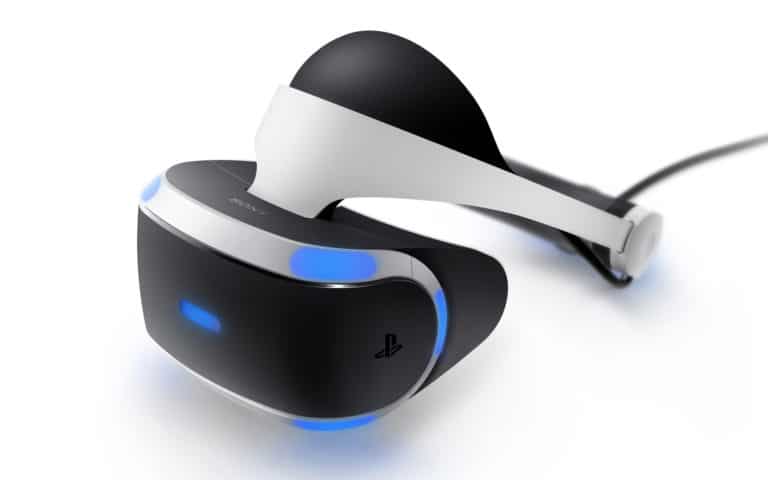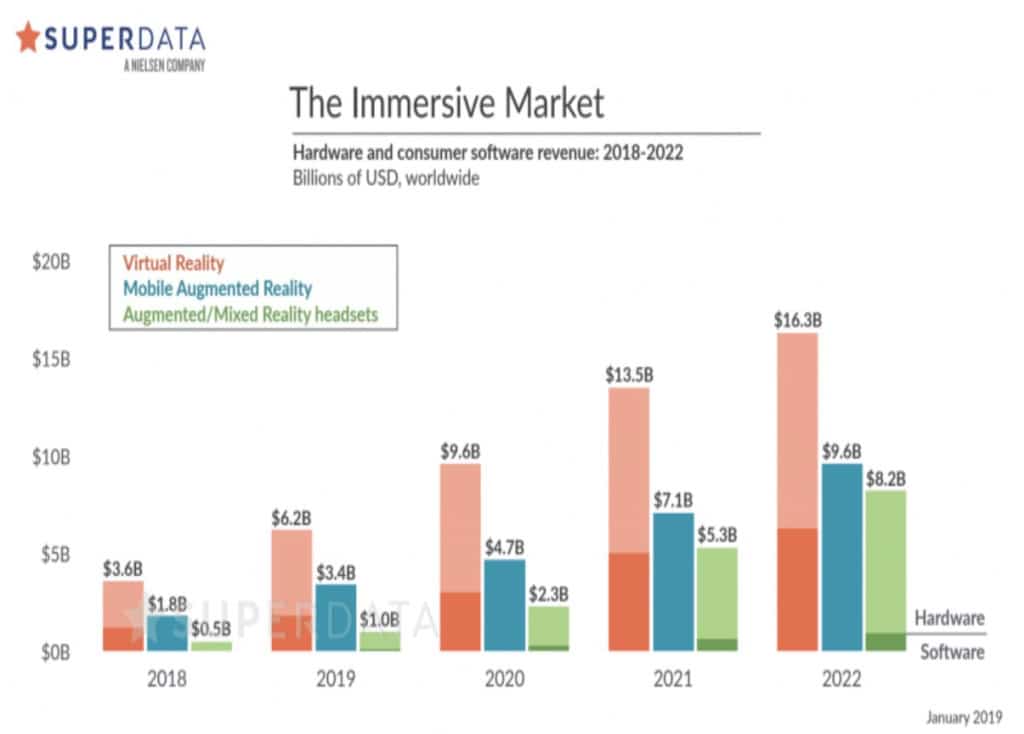
Data Point of the Week is AR Insider’s weekly dive into data from around the XR universe. Spanning usage and market-sizing data, it’s meant to draw insights for XR players or would-be entrants. To see an indexed archive of data briefs and slide bank, subscribe to ARtillery Pro.
VR hardware sales are a moving target, especially in early-stage oscillations of excitement and doubt. We recently went through the exercise of pinpointing Oculus Go’s 2018 sales, a key barometer for VR’s momentum. And of course, tracking and market sizing are ongoing.
Adding to the discussion are the latest hardware figures from Superdata (now owned by Nielsen). And it’s good news for VR proponents. After lots of industry rhetoric about negative VR sales growth in ’18, the firm reports 30 percent year-over-year revenue growth.
Included in the announcement were also telling Q4 unit sales figures. PSVR led the pack (similar to IDC’s figures) with 700,000 units, followed by Oculus Go with 550,000 units, HTC Vive with 160,000 units and Oculus Rift with 130,000 units. Keep in mind this was the holiday quarter.

It’s worth underscoring that the above figures are unit sales, not revenue. The difference is important in this case due to the price competition that’s currently driving growth — especially for Oculus. Early/unproven tech like VR, at least to mainstream consumers, tends to be price-elastic.
This comes through in the 30 percent industry revenue jump. In other words, demand is being stimulated by price competition as intended. Though lower-priced headset unit growth (Oculus Go) has disproportionately-lower revenue growth, strong unit sales of the $299 PSVR offsets that.
Superdata also projects significant VR revenue growth in 2019 to $6.2 billion (including software). This will be driven by continued PSVR sales, given an installed base of 90 million PS4s, and notably the $399 Oculus Quest. The firm projects the latter to ship an aggressive 1.3 million units.

Oculus Quest will launch in Q2, meaning it really only has two full quarters to reach these figures in 2019. Then again, the timing is right in terms of the refresh cycle for lots of Rift owners. We’re at the cusp of a refresh cycle for 2016 and 2017-purchased tier-1 headsets. Many will opt for Quest.
Meanwhile, VR software revenue continues to be dominated by games — not surprising given the gaming-oriented PSVR’s market share. But this also extends to mobile AR, where the prevailing business model continues to be gaming, such as in-app purchases in Pokemon Go.
The latter derived $2 billion to date, and is going strong despite receding from the collective consciousness. Niantic continues to engage core users with ongoing releases. And new features are coming, due to Niantic’s IP acquisition spree… not to mention Harry Potter, Wizards Unite.
We’ll be tracking developments closely.
For deeper XR data and intelligence, join ARtillery PRO and subscribe to the free AR Insider Weekly newsletter.
Disclosure: AR Insider has no financial stake in the companies mentioned in this post, nor received payment for its production. Disclosure and ethics policy can be seen here.
Header image credit: Sony
